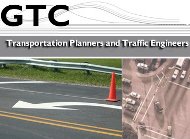10/25/2011
Washington: Report Finds Red Light Camera Installation UnjustifiedTraffic engineering firm study finds red light camera installation in Bellingham, Washington unjustified.

A report released last week by the engineering firm Gibson Traffic Consultants (GTC) found the use of red light cameras unjustified in Bellingham, Washington. The study gathered collision data from the Washington State Department of Transportation (WSDOT) and the city to conclude the use of an automated ticketing machine at the intersection of Guide Meridian Road at Telegraph Road was unwarranted.
"Based on the five years of collision data obtained from WSDOT and the city of Bellingham, the collision data does not support the introduction of red-light cameras," GTC traffic engineer Matt Palmer wrote. "Per the ITE collected statistics it only has the potential to reduce at angle red-light running collisions by a less than 1 per year but increase rear ends by an average of nearly 5 per year for this particular intersection."
The report argues that proper engineering practices require jurisdictions to install photo enforcement only after performing an engineering evaluation and exhausting all possible countermeasures, including adjusting the length of the yellow light and improving signal visibility. Bellingham performed no study before deciding to allow American Traffic Solutions (ATS) to install and operate the camera. Instead, it made the decision after ATS found 34 potential tickets after eight hours of monitoring.
"The reason to conduct such investigation and corrections before resorting to additional enforcement such as red-light cameras is that research has shown that although additional enforcement might reduce the number of potential at angle collisions; it could also increase, rear-end collision frequency," Palmer wrote.
GTC found in its review that over the course of five years, only one collision was specifically linked to someone running a red light. On the other hand, there were 78 rear-end collisions -- two-thirds of the total number of accidents. Making the rear end accident situation worse would make the location more dangerous, not less dangerous.
"With no fatalities or injuries related to the at angle collisions but 30 injuries related to rear end collisions it is anticipated that the proposed red-light camera would not reduce the collision/injury potential of the intersection and potentially increase the collision/injury potential at this particular location," Palmer concluded.
Photo ticketing in the city is on hold while pending the outcome of an initiative vote on November 8. The Transportation Safety Coalition succeeded in placing a referendum on red light camera use on the ballot, although ATS was able to convince an appellate court to convert the measure into an advisory vote. The coalition commissioned the GTC study.
A copy of the study is available in a 600k PDF file at the source link below.


